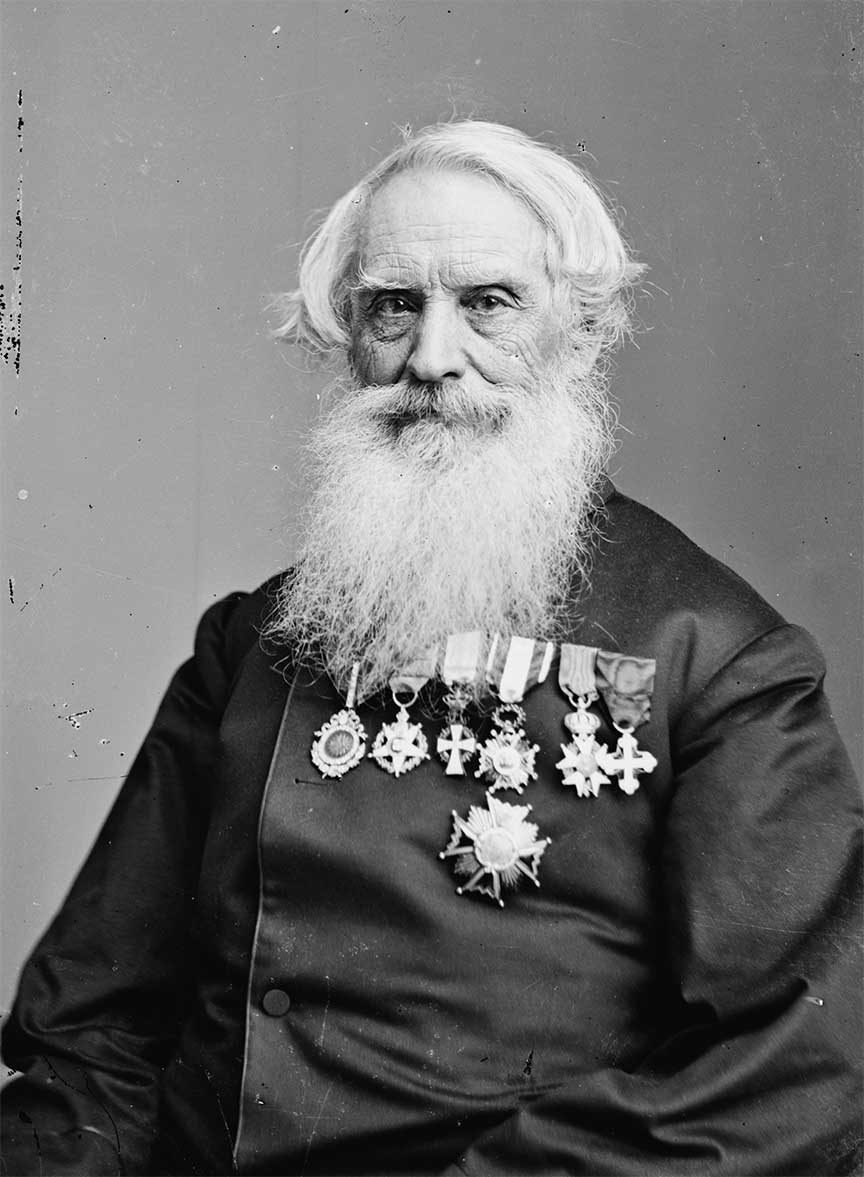Samuel Finley Breese Morse (1791-1872)

Samuel Morse, born in 1791, was an accomplished artist and the inventor of the magnetic telegraph and Morse code. Initially focused on painting, he co-founded the National Academy of Design and served as its first president. Morse’s telegraph revolutionized global communication, earning him international recognition. He died in 1872, leaving behind a legacy in both art and science.
Morse began his formal education at Phillips Academy in Andover, Massachusetts, before attending Yale University, where he studied philosophy, mathematics, and the rudiments of electricity. Graduating from Yale in 1810, he initially pursued a career in the arts, traveling to England to study painting under the tutelage of some of the most respected artists of the time, including the American painter Benjamin West. While in England, Morse became skilled in portraiture and historical painting, mastering the techniques of neoclassicism and gaining recognition for his artistic work. Some of his notable paintings include The Gallery of the Louvre and a portrait of former President John Adams.
Upon returning to the United States, Morse continued his artistic pursuits and became a key figure in the American art scene. In 1825, he co-founded the National Academy of Design in New York and was elected its first president, a position he held for several years. During this period, he also accepted a professorship in the literature of the arts and design at New York University, where he shared his knowledge and passion for painting with younger generations of artists.
Despite his success in the arts, Morse’s life took a significant turn in the 1830s when he became deeply interested in the growing field of electromagnetism and communication. During a sea voyage in 1832, he encountered conversations about the discovery of electromagnetism, which sparked his interest in long-distance communication. Morse began working on the concept of a telegraph system that could transmit information over great distances using electrical impulses. He developed a prototype and, together with Alfred Vail, invented Morse code—a system of dots and dashes used to represent letters and numbers, allowing for efficient transmission of messages.
Morse faced many challenges in securing support and funding for his invention, but by 1844, he succeeded in transmitting the first long-distance telegraph message from Washington, D.C., to Baltimore, Maryland. The message, “What hath God wrought,” marked a pivotal moment in the history of communication. The magnetic telegraph revolutionized communication, making it possible to send information across vast distances in a matter of seconds.
Morse’s invention had a profound impact on the world, laying the foundation for modern communication systems and transforming the global economy. He was widely celebrated for his contributions and received numerous honors in his lifetime. Samuel Morse died on April 2, 1872, in New York City, leaving behind a legacy as both a pioneering inventor and a respected artist.
 >
>